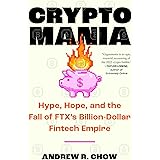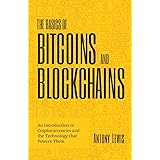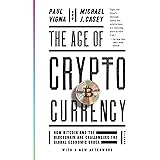The intricate web of the United States economy often grapples with a formidable challenge: the burgeoning national debt. As highlighted in the accompanying video, the US government currently shoulders a staggering burden of over $37 trillion in debt, a figure that continues to escalate rapidly. This colossal sum significantly impacts every taxpayer, diverting crucial funds towards interest payments instead of vital public services and investments. Such a scenario understandably prompts a search for innovative solutions, and former President Trump has reportedly put forth a plan involving both gold and cryptocurrencies to address this immense financial strain.
Understanding the nuances of this proposed “Trump crypto gold plan” is paramount for anyone keen on grasping potential shifts in the American financial landscape. The strategies under consideration, which include gold revaluation, establishing a strategic Bitcoin reserve, and introducing asset-backed stablecoins via the Genius Act, carry substantial implications for the economy and for individual financial well-being. Examining these proposals closely reveals both their potential benefits and inherent risks, offering a deeper perspective beyond the headlines.
Navigating the National Debt Crisis: Trump’s Proposed Crypto and Gold Strategies
The ongoing discussion about the US national debt is not merely an academic exercise; it represents a tangible threat to economic stability and the purchasing power of the dollar. The government’s consistent habit of spending more than it collects in taxes necessitates continuous borrowing, adding to the ever-growing debt pile. This pattern has led to significant portions of tax revenue being allocated solely to interest payments, a situation that is unsustainable in the long run.
The Genesis of the US National Debt Problem
Every year, the United States government collects tax dollars from its citizens and businesses, which it then allocates across various sectors such as military, welfare, healthcare, and infrastructure. However, for decades, government expenditures have frequently outpaced revenue generation. To bridge this gap, the Treasury issues debt instruments like bonds, effectively borrowing from individuals, institutions, foreign governments, and the Federal Reserve itself. For instance, in 2025, it is projected that the government will borrow around $2 trillion to cover its spending, which is anticipated to reach approximately $7 trillion against an estimated $5 trillion in taxes.
This escalating national debt incurs increasingly heavy interest payments, especially as interest rates have climbed significantly since 2020. These rising costs represent a drain on the national budget, reducing funds available for other critical areas. Historically, the Federal Reserve has sometimes resorted to printing money to buy government debt, a process known as quantitative easing. While this can provide immediate liquidity, it also risks devaluing the dollar and fueling inflation, creating a vicious cycle for the economy.
1. The Gold Revaluation Concept: A Historical Echo
Firstly, one of the more traditional, yet still radical, proposals involves revaluing the United States’ substantial gold reserves. The Federal Reserve Bank’s report, “Official Reserve Revaluations: The International Experience,” suggests that the nation’s physical gold, while significant, is vastly undervalued on official financial statements.
Mechanism of Gold Revaluation
The United States currently holds a little over 261 million troy ounces of gold. On the government’s balance sheet, this gold is officially valued at a mere $42.22 per troy ounce, summing up to approximately $11 billion. Imagine if this valuation were to be adjusted to reflect current market prices, perhaps around $3,300 per troy ounce. Such a revaluation would instantly transform the stated value of the gold reserves to approximately $860 billion. This accounting adjustment would effectively generate $849 billion in perceived new assets for the government.
The government could then issue a certificate representing this revalued gold to the Federal Reserve Bank. In return, the Fed could provide the government with a substantial cash sum, perhaps $800 billion. Crucially, this would not be structured as a loan. Instead, it would be an exchange: a gold certificate for spending dollars. This mechanism would allow the government to acquire significant liquidity without incurring new debt, freeing up funds to pay down existing debt or inject into the economy through job creation, infrastructure projects, or enhanced services. If these expenditures stimulate economic activity, they could generate more income and profits, ultimately leading to increased tax revenues and further debt reduction.
Historical Precedent: FDR’s 1934 Revaluation
Interestingly, this concept is not without historical precedent in the United States. Following the Great Depression in 1934, President Franklin D. Roosevelt revalued gold from about $20 an ounce to $35 an ounce. This bold move created nearly $3 billion in new spending power, which was instrumental in stimulating the struggling economy during a critical period. This historical event serves as a powerful reminder that such financial maneuvers, though seemingly unconventional, have been utilized in times of profound economic stress.
2. Establishing a Strategic Bitcoin Reserve: Digital Assets in Statecraft
Secondly, a more contemporary component of Trump’s proposed plan involves establishing a strategic Bitcoin Reserve and a broader digital asset stockpile, as outlined in an Executive Order signed in March 2025. This strategy represents a significant pivot in how the government views and manages digital assets.
Leveraging Seized Digital Assets
The immediate question arises: how would the government acquire Bitcoin without further burdening its already strained budget? The Treasury Department has clarified that it would not purchase Bitcoin. Instead, it would utilize confiscated cryptocurrency assets, primarily Bitcoin, seized from individuals involved in illegal activities. Previously, such seized Bitcoin was typically sold off, but the new proposal advocates for holding onto these assets as a long-term investment. Estimates vary, but sources suggest the US government could possess anywhere from 30,000 to 200,000 Bitcoins in its reserves, assets that, if managed differently, could have profound financial implications.
The executive order itself notes that premature sales of seized Bitcoin have already cost the government over $17 billion in potential upside. By retaining these digital assets, the government aims to capitalize on Bitcoin’s long-term appreciation. Imagine if the government had held onto all its seized Bitcoin; the financial benefit could have been immense. Instead of selling, the strategy shifts to treating Bitcoin as a strategic asset, similar to how nations might hold gold.
The Potential for a Digital-Backed Reserve
Similar to the gold revaluation, the government could pledge a portion of its Bitcoin holdings to the Federal Reserve Bank. For example, valuing 50,000 Bitcoins at $100,000 each would represent $5 billion in assets. The Fed could then issue dollars against this pledged digital asset, again, not as a loan but as an exchange for a certificate representing the Bitcoin. This inflow of cash could either reduce the national debt or fund economic stimulus programs without directly increasing the debt. If Bitcoin’s value appreciates further, say to $1 million per coin, the government could potentially re-pledge the asset for even more spending power in the future, thereby securing a long-term revenue stream from its digital holdings.
3. The Genius Act and Gold/Bitcoin-Backed Stablecoins
Thirdly, another layer of this plan is introduced through the “Genius Act,” signed in July 2025, which aims to regulate stablecoins in the United States. This act proposes a truly novel approach: allowing the US government to create its own stablecoins, pegged to the value of either gold or Bitcoin, which could then circulate as alternative currencies within the economy.
Expanding the Money Supply with Stablecoins
The core idea behind this initiative is to expand the money supply without directly escalating the national debt. By backing new stablecoins with physical gold or strategic Bitcoin reserves, the government could introduce new liquidity into the financial system, potentially stimulating commerce and investment. Imagine consumers and businesses using government-issued digital tokens, whose value is intrinsically tied to tangible assets like gold or high-value cryptocurrencies. Such a system could offer stability and trust, circumventing the inflationary pressures associated with printing unbacked fiat currency.
While the full operational mechanics of such a system involve extensive theoretical and practical considerations, the underlying intent is clear: to leverage alternative assets to create a more robust and flexible monetary framework. This innovative approach seeks to address monetary policy challenges by diversifying the forms of national currency, offering potential resilience against the traditional vulnerabilities of fiat money.
Potential Risks and Economic Ramifications
While these proposals offer tantalizing solutions to the national debt crisis, they are not without substantial risks. Any strategy involving the revaluation or pledging of assets, especially volatile ones like gold and Bitcoin, carries inherent uncertainties that could have far-reaching economic consequences.
The Federal Reserve’s Balance Sheet Under Scrutiny
A primary concern revolves around the Federal Reserve’s balance sheet. When the government pledges assets like gold or Bitcoin to the Fed in exchange for cash, the Fed essentially converts the value of these assets into spending dollars. If the market value of these pledged assets were to plummet, say gold falls from $3,300 to $1,500 an ounce, or Bitcoin drops from $100,000 to $50,000 a coin, the Fed would be left holding an “IOU” that has significantly depreciated in value. This erosion of asset value on the Fed’s balance sheet could undermine public and international confidence in the central bank’s financial strength. Imagine global financial institutions scrutinizing a weakening Fed balance sheet; it could trigger widespread skepticism.
Impacts on Global Financial Trust and the US Dollar
The strength of the US government rests significantly on its perceived ability to repay its debts. If the Federal Reserve’s balance sheet appears fragile due due to devalued pledged assets, it could signal instability. This vulnerability might cause lenders—including individuals, large institutions, and foreign governments—to become hesitant about extending further credit to the US. Considering that the US dollar serves as the world’s reserve currency, and many countries peg their assets to its value, a crisis of confidence could have a catastrophic domino effect on the entire global financial system. The consequences of such an erosion of trust could lead to widespread divestment and economic turmoil.
The Volatility Factor: Gold and Bitcoin
Both gold and Bitcoin, despite their perceived value, are subject to significant market volatility. Gold prices, for example, saw major fluctuations, peaking in the mid-1990s, crashing, then rallying in the mid-2000s and again around 2012 before another dip, and a recent resurgence. Bitcoin, existing only since 2009, is notorious for its dramatic price swings. Imagine the government’s financial plans being tied to an asset that could halve in value overnight; such exposure introduces a high degree of risk. If a revaluation or pledge occurs at a market peak, and prices subsequently crash, the entire strategy could backfire, potentially forcing the government to print even more money to shore up the Fed’s balance sheet, thereby exacerbating inflation and currency devaluation.
Diversification as a Strategy for Savvy Investors
The discussions around these bold economic proposals underscore a crucial lesson for investors: the enduring importance of diversification. As the economy navigates unprecedented challenges and experiments with innovative financial solutions, safeguarding one’s wealth becomes increasingly complex. Real diversification means spreading investments across a range of asset classes that respond differently to market conditions. This approach helps mitigate risks associated with any single asset or government policy.
Savvy investors often consider assets like physical gold, known for its historical role as a hedge against inflation and economic uncertainty. Similarly, an allocation to Bitcoin, despite its volatility, offers exposure to a rapidly evolving digital asset class that could serve as a valuable store of value. Beyond these, tangible assets such as physical real estate, whether for personal use or rental income, provide intrinsic value and a potential income stream. Investing in stocks, which represent ownership in companies generating profits and creating value, also remains a fundamental component of a well-rounded portfolio. By embracing comprehensive diversification, individuals can better navigate the economic shifts and policy experiments, positioning themselves more resiliently against future uncertainties. Understanding the ongoing governmental financial strategies, like the Trump crypto gold plan, empowers investors to make more informed decisions about their own financial futures.







